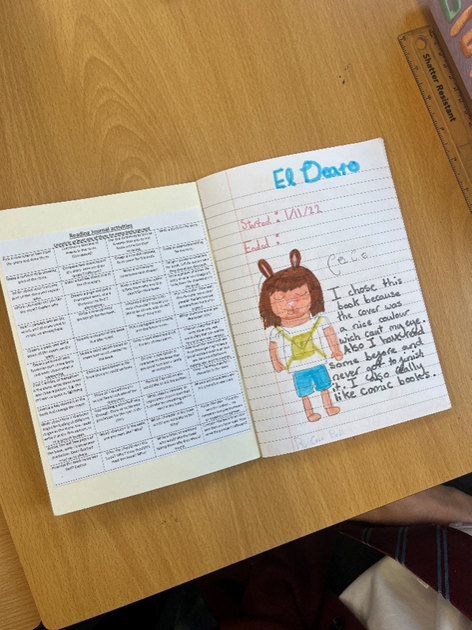This article was originally published on 6 January 2023
The reading record.
I’m not sure how you react to those words, but personally, I find myself groaning out loud.
The purpose of them is simple: to track children’s reading between home and school. In practice, however, they bring about many issues.
There is the work of asking parents to sign when their child has read, and reminding children to bring them in each day. There’s the fact that adults in school have to check them regularly.
In some cases, children are punished if they haven’t read at home or their parents haven’t signed it. But, inevitably, the records get lost or forgotten, and - as pupils reach upper key stage 2 and become independent readers - get ignored completely.
Reading records suck the joy out of reading at home. So, this year, I decided I’d had enough.
The reading record is a requirement in my school, so getting rid of them altogether wasn’t an option. Instead, I decided to give them a face-lift, and rebrand them as a “reading journal”.
What is a reading record?
The difference between the reading journal and the reading record is that the children choose how it is filled in. It starts as a blank notebook. At the front, I paste a reading tracker (a picture of a bookshelf for them to list the books they’ve read) and a list of suggested activities.

The activities include things like:
- Draw your own front cover.
- Describe which character you are most like and why.
- Write a new opening paragraph.
- Write five questions you would like to ask the author.
I ask that children complete at least one activity per book they read.
Beyond this, children are free to structure and use their journals however they like. Some choose to do this by summarising what happens in the story each time they read; some create a double-page spread for each book; some have drawn their front covers, or written their own blurb.


Depending on your class, you may need to provide pupils with more structure, at least to begin with, but having more ownership over this, and the chance to express their individuality, has encouraged my class to be more enthusiastic about filling the journals in.
Children can complete them at home, but I also give them 10 minutes of lesson time to fill them out after independent reading in class, which happens twice a week.
During this time, I circulate to monitor what they have been doing, ensuring I see every child’s journal at least once a week. If I am concerned by anything, for example, frequency of reading or comprehension, then I can address it.
Some children choose to take their journal home, but others would rather they stay at school; either is absolutely fine. I also got rid of the requirement for parents to sign anything, and made it clear there would be no punishment if they hadn’t been completed.
I’ve only been doing this for a few weeks, but so far, it has got the children enthusiastic and engaged. They say that the tasks help them to give their opinions of the book in different ways, that the journals allow them to be more creative, and that they feel a responsibility for the upkeep of the journal.
I am determined to continue this and, hopefully, start to introduce them in other year groups, too.
In lower KS2, children may need heavy modelling initially (or even templates printed out) to support them, but after a while, they will become more independent and will find their own style.
In KS1, a whole-class reading journal could be started based on books read as a class, which would at least get them used to the concept and what sort of things to write, ready for their use in KS2.
If you want to introduce something similar, I’d recommend that you first show children various examples, completed by you or other children. Once they understand that they are completely free to design it how they wish, with no rules or expectations, they will be eager to get started.
Claire Tracy is a Year 6 teacher in Berkshire





